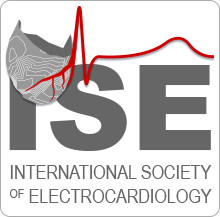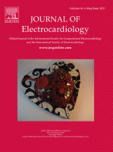An interview with one the core members of ISE, Dr. Ljuba Bacherova
Adrian: Why was important to you to get involved with the ISE?
Ljuba:
My first experience with this Society goes back to the year 1981 when I entered my PhD program in electrocardiology under the mentorship of Professor Ivan Ruttkay-Nedecky. He was one of the key personalities of the International Council of Electrocardiology. In the years 1982/1983 as PhD students we were involved in the preparation, organization and then the participation at the International Congress on Electrocardiology that was organized by Professor Ivan Ruttkay-Nedecky in Bratislava in 1983.
In that time, annual meetings under the names of Colloquium Vectorcardiographicum and later International Congress on Electrocardiology were organized alternatively in “Western” and “Eastern” countries. Considering the situation of the cold war, it was an amazing arrangement supporting contacts between scientists, exchange of ideas, discussions and collaboration. Being a part of this scientific community was a strong motivation. For young researches it was very interesting to meet personalities that were recognized only as names in publications - like opening door to the international scientific community.
It was not only the international character of the Society that has attracted me; it was the electrocardiology itself as the research field that was fascinating – the interdisciplinary science including a wide spectrum from clinical to basic research, from medicine to computer sciences.
A: What is the IRIS initiative? How did you start this project? How was working along with Galen Wagner, former Editor-in-Chief of the Journal of Electrocardiology?
L:
IRIS - the International Research Interdisciplinary School - is a common initiative of the Journal of Electrocardiology, Anatolian Journal of Cardiology, Monitor of Medicine of the Slovak Medical Society, Balkan Medical Journal, Central Asian Medical Journal, Journal of Kyrgyz State Medical Academy, Cardiovascular Systems and Heart, Vessels and Transplantation. The IRIS program is based on the Research Practicum of the Duke University, Durham, NC, USA. It combines plenary and small group discussions, project development and class presentation, and discussion on publishing scientific papers with representatives of biomedical scientific journals.
The idea came up during one of my first stays in the Editorial office in Durham. Galen Wagner invited me to one of the university workshops and I had the opportunity to experience the way how students worked on their research protocols, using the Research Practicum protocol developed by Galen Wagner and Erick Eisenstein.
The first IRIS course (in that time it was named the International Scientific Summer School) I organized in Slovakia in 2006. The original Research Practicum was adapted for a four-day course to provide an interdisciplinary, international environment for training in the skills required to prepare research study protocols, scientific manuscripts and for facilitating international collaboration.
We did not know whether the workshop is applicable to this very different environment, the more that several modification were introduced – the participants were working in groups that were interdisciplinary and international. The common language was English - another considerable difference - since almost all participants so far were non-native English speakers. This first pilot IRIS training in Slovakia was very successful and the results and feedback from the participants exceeded our expectations. We decided to continue and the next IRIS 2007 was in Turkey just after the International Congress on Electrocardiology and since then we organize the courses every year.
Up to now (October 2017) twenty two IRIS courses were organized in twelve countries on three continents (Austria, Brazil, Croatia, Kazakhstan, Kyrgyzstan, Macedonia, Poland, Romania, Russia, Slovakia, Spain, Turkey). A total number of 344 trainees came from 33 countries (Albania, Austria, Bosnia and Herzegovina, Brazil, China, Colombia, Croatia, Czech Republic, Denmark, Egypt, Estonia, Georgia, Greece, Hong Kong, Hungary, Kazakhstan, Kosovo, Kyrgyzstan, Lithuania, Macedonia, The Netherlands, Poland, Portugal, Romania, Russia, Serbia and Montenegro, Slovakia, Spain, Sweden, Turkey, Ukraine, USA, Venezuela).
In 2014 we published an evaluation of the scientific performance of the IRIS trainees[1]. We were pleased to see that the IRIS training was associated with identifiable increase in scientific publication activity. Also the Journal of Electrocardiology has benefited from the increased quality of submitted manuscripts as well as from the increased pool of authors and peer-reviewers.
Galen Wagner was a great supported of this initiative; he was present in almost all courses, either in person or via Skype. He was a highly qualified and passionate teacher / mentor. During my several stays in the Editorial office I had the privilege to be present at Galen’s daily mentoring of both Duke and international students. It was very different from the didactic methods I had experienced before, and very effective.
As the Editor-in-Chief of the Journal of Electrocardiology he also encouraged participants to write and submit manuscripts to scientific journals, explained how to benefit from reviewers comments and involved participants as reviewers for the Journal of Electrocardiology, stressing the review process as a tool to develop further critical thinking and also to improve one’s own writing.
A: Do you think that the ECG helps in the diagnosis of left ventricular hypertrophy? Can you give us direction on how to read the most relevant papers on this topic?
L:
The ECG diagnosis of left ventricular hypertrophy (LVH) is an excellent example of the changing role of ECG as a diagnostic method.
LVH is defined as an increase in the size of an organ or its parts, therefore there is an understandable effort to have a diagnostic method that estimates the increased LV size.
In the case of ECG, an increased QRS voltage was observed in a patient with mitral regurgitation already in the year 1906 and since then it has been described repeatedly in a proportion of patients with LVH. A simple association has been made – the bigger the LV the higher the QRS voltage. So for years, ECG has been used as a sort of a surrogate for estimating the increased LV mass. However, in spite of a quite impressive number of recommended ECG criteria for LVH, it has been a vain effort.
By principle, ECG cannot measure the size or mass: there are now available non-invasive imaging methods that can do it. But, on the other hand, and it is of utmost importance, ECG provides a unique information on the electrical characteristics of the heart that is not provided by any other diagnostic methods.
Differences in LVM as estimated by imaging methods versus QRS voltages and other electrical phenomena indicate different manifestations of underlying anatomical versus electrical remodeling processes. The variety of QRS and T-wave changes that occur in the context of electrically remodeled myocardium reflect the added diagnostic and prognostic value of ECG.
The term “false positive" (or negative) when applied to ECG results in relation to LVH is misleading. Future ECG research must therefore be focused on identifying those characteristics of electrical phenomena associated with left ventricular hypertrophy that relate to changes in risk for ventricular arrhythmias or pump failure, i.e., conditions of potentially greater clinical importance than anatomical LVH per se.
A: Please tell us about a good ECG paper that you read in the last 12 months?
L:
In the context of the effort for the shift in paradigm in ECG diagnosis of left ventricular hypertrophy I would like to turn you attention to these two papers that demonstrate the new trends and are opening new directions in the research of LVH:
- Estes EH, Zhang Z-M, Li Y, Tereshchenko LG, Soliman EZ: Individual Components of the Romhilt-Estes Left Ventricular Hypertrophy Score Differ in Their Prediction of Cardiovascular Events: the Atherosclerosis Risk in Communities (ARIC) Study. Am Heart J 2015;170:1220-1226.
- Maanja M, Wieslander B, Schlegel TT, Bacharova L, Daya HA, Fridman Y, Wong TC, Schelbert EB, Ugander M: Diffuse myocardial fibrosis reduces electrocardiographic voltage criteria for left ventricular hypertrophy independent of left ventricular mass. JAHA 2017; e003795.
A: You are the only female president of the ISE so far? How was your experience leading this Society? What’s your opinion on the recent paper on Gender Equity in Electrocardiology for which you are a co-author?
L:
I become the President of ISE in 1997, and I was the first and so far the only female president of the Society. It was really an honor and in that time I did not perceive it as anything related to gender issues. Perhaps I felt a little isolated, but I attributed my feeling to the more global problems of the East-West relations. In nineties, Slovakia was a country in transition; we had our local problems to deal with. In the Society the old alternative model of organizing the meetings was not more an issue, however somehow the “West” – “East” relations (whatever it means) I feel still as a challenge.
Now, after 20 years, I see the gender issue differently – there are still little women at visible positions in science. It is a situation going beyond the Society – it is a complex social situation recognized even in developing countries. I am glad that our Society has open this issue and I will do my best and contribute in creating conditions and encouraging women in finding their careers in research.
A: As a council Member of the ISE, what should be the next steps to consolidate our Society?
L:
The Society is a very open community, open to everybody who in interested in research in the field of Electrocardiology and has attended the International Congresses of Electrocardiology. This arrangement has its historical reason: the history of the Society goes back to fifties of the last century, when the mutual East-West scientific contacts were organized by enthusiastic personalities. Considering the political situation in that time, it was vital to keep the formal aspects of the scientific contacts as limited as possible. In spite of many limitations of this arrangement, and, on the other hand, it is possible that thanks to this arrangement, the Society functions already nearly 60 years.
Now, the technology allows free and extensive communication. I see the following possibilities:
- To continue in building networks, having in mind the mission of the Society: the interdisciplinary character of electrocardiology, as well as the international character of the Society.
- To utilize existing ECG and clinical databases for re-analyses. Enormous data are already collected all over the world - could we make them available and accessible?
- To attract young scientists, showing electrocardiology as an attractive prospective scientific field, and also providing international mentoring,
- To involve scientists from different countries. Coming just back from Kazakhstan, and having the 12 year experience with IRIS initiative I see great possibilities.
A: How do you see the future of research? What would be your advice for a young PhD starting his academic career?
L:
Being involved in the research in electrocardiology for years and seeing the development in science and technology in general and in electrocardiology particular I have to say that we are living in an exciting period.
We participate in re-evaluating of old diagnostic paradigms (as can be demonstrated in the case of LVH), or in defining new diagnostic categories (as e.g. Brugada syndrome and Bayes syndrome). Using new technologies we are able to image electrical processes in the heart and simulate electrical processes to understand them better. It opens endless spectrum for research.
And a message for young scientists? The clinical electrocardiography is as a top of the iceberg seen above the water. It is worth to go deeper to discover what is underneath. There are millions of ECGs recorded in the world waiting for your analysis and invention.
[1] Bacharova L, Kudaiberdieva G, Misak A, Hakacova N, Timuralp B, Wagner GS. The effect of International Scientific Summer School research training on scientific productivity of trainees. Int J Cardiol. 2014;176:1142-1146.

